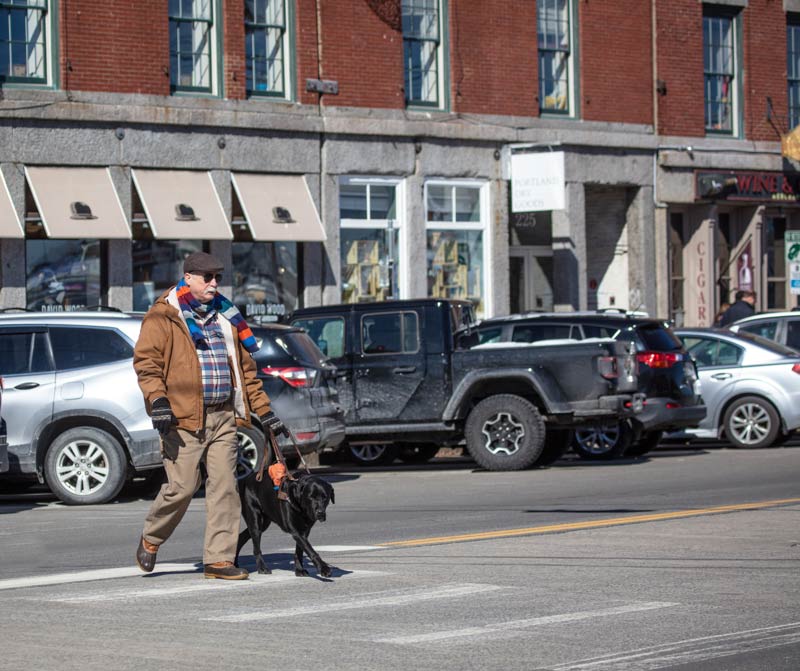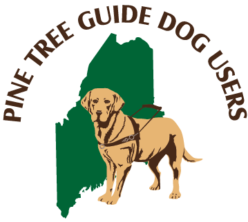Pedestrian Safety
Encounters with Other Dogs

Guide dogs help make it possible for blind people to travel independently and safely in an increasingly more complex and demanding environment. But the safety of even the most proficient guide dog teams can be jeopardized by circumstances beyond their control.
Improvements to these circumstances require systemic change, along with collaboration and teamwork. To that end, PTGDU remains ever grateful to Maine state legislators and law enforcement officers for their past and ongoing efforts to enact and uphold legislation intended to provide safer and more accessible communities for Maine’s guide dog teams.
Pedestrian Safety
The advent of complex intersection designs and controls, roundabouts, and quiet cars has made Maine’s pedestrian environment increasingly challenging for people who are blind or visually impaired. Changes in the pedestrian infrastructure such as the standardization of pedestrian pushbutton locations, accessible pedestrian signals (APS) at street crossings, and tactile warnings at the edges of curb ramps can help to counterbalance some of these challenges.
Federal laws and standards help to provide equal access for blind pedestrians. For example, part 4 of the Manual on Uniform Traffic Control Devices contains standards for the application and installation of APS, and the Pedestrian Safety Enhancement Act requires hybrid and electric vehicles to emit a sound when traveling in reverse or forward at speeds below about 19 mph. These audible cues provide information that is otherwise not available to blind pedestrians.
On the state level, Maine’s White Cane Law holds motor vehicle drivers liable if they fail to take “all necessary precautions to avoid injury” to blind or otherwise physically disabled pedestrians…” In another section of the statute, it directs the Governor to take “suitable public notice of October 15th as White Cane Safety Day” and to issue a formal proclamation about its significance.
In conjunction with White Cane Safety Day, PTGDU members often participate in an awareness walk to promote the safe travel of guide dog teams.
Find out how you can be part of this year’s White Cane Awareness Walk for Independence.
Encounters with Other Dogs
Another significant safety issue for guide dog teams involves unwanted encounters with loose or poorly controlled dogs. It’s important to note that any dog, regardless of size or breed, can pose a threat to a guide dog team’s safety.
Guide dog teams routinely experience interference from other dogs, whether it be a neighbor’s pet that enthusiastically runs out to greet the team, the family “guard” dog that menacingly growls and barks or circles the team as they pass its territory, or the well-meaning pet owner who brings a leashed animal over to visit the guide dog. All of these encounters can distract the guide dog from its work and potentially cause harm to the team.
Spread the word about Guide Dogs at Work. Watch the video for pet owners and download the flyers, posters and a lesson plan for young students!
Likewise, dog attacks on working guide dogs can be extremely dangerous for both members of the team. The guide dog handler, with limited or no vision, may be unable to fend off the attacking dog. Moreover, without the guide dog’s assistance, the handler essentially becomes stranded and cannot even go for help if the guide dog is injured. Even if the attacking dog is driven off, the handler may be unable to determine the extent of the guide dog’s injuries or to identify the attacking dog to the authorities. After the trauma of an attack, some guide dogs are no longer able to continue their work, and for some handlers, it takes months for them to overcome the fear of subsequent attacks.
